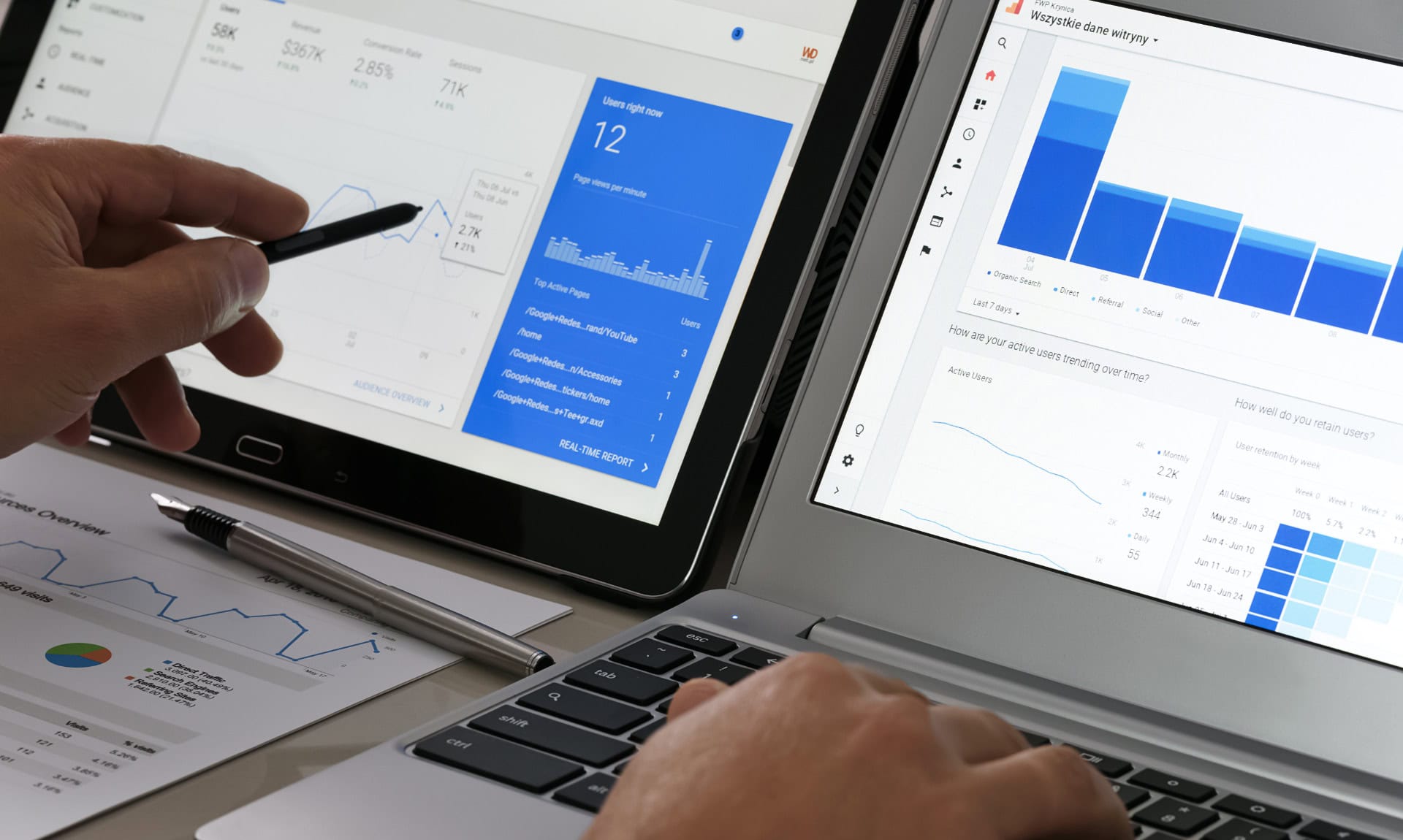
10 Performance Marketing Strategies That Actually Work
In today’s competitive digital landscape, an effective performance marketing strategy is crucial for driving measurable results and maximizing ROI. To stay ahead, marketers need to adopt advanced performance marketing tactics that go beyond the basics.
This article explores ten performance marketing strategies that actually work, offering actionable insights and best practices to enhance your performance marketing plan.
What Is Performance Marketing?
Performance marketing is a digital marketing strategy where advertisers pay based on specific actions, such as clicks, leads, or sales, rather than for general ad placements.
This approach ensures that marketing spend is directly tied to measurable outcomes, making it highly efficient and cost-effective. By focusing on performance marketing metrics, marketers can optimize their campaigns to achieve better results and higher ROI.
Benefits of a Performance Marketing Strategy
A well-executed performance marketing strategy offers numerous advantages that can significantly enhance your marketing efforts.
- Cost Efficiency: By paying only for actual results, such as clicks or conversions, you ensure that your budget is spent effectively, reducing wasted spend.
- Measurable ROI: Performance marketing allows for precise tracking of every dollar spent, enabling you to measure ROI and adjust strategies in real-time.
- Targeted Reach: Advanced targeting techniques help you reach the most relevant audience, increasing the likelihood of engagement and conversion.
- Scalability: Performance marketing campaigns can be easily scaled up or down based on performance data, allowing for flexible and dynamic budget allocation.
- Data-Driven Insights: Continuous data collection and analysis provide valuable insights into customer behavior and campaign effectiveness, informing future marketing decisions.
Now, let’s get into our list of performance marketing tactics and best practices.
1. Leveraging AI for Predictive Analytics
Leveraging AI for predictive analytics involves using artificial intelligence to analyze historical data and predict future customer behaviors and trends. This enables marketers to make more informed decisions, optimize campaigns, and anticipate customer needs.
- Customer Segmentation: Use AI to analyze purchase history and browsing behavior to create highly targeted customer segments. For example, a fitness app can predict which users are most likely to subscribe to premium plans based on their activity patterns.
- Ad Spend Optimization: Implement AI algorithms to predict the performance of different ad channels and allocate budget accordingly. For instance, a fashion retailer can use AI to determine which digital ads will generate the highest ROI during new product launches.
- Churn Prediction: Utilize AI to identify patterns that indicate when customers are likely to stop engaging with a brand. A subscription service, for example, can use predictive analytics to proactively reach out to at-risk customers with personalized retention offers.
2. Dynamic Creative Optimization
Dynamic Creative Optimization (DCO) is a strategy that uses real-time data to tailor ad creatives for individual users, enhancing the relevance and effectiveness of marketing campaigns. This approach dynamically adjusts elements such as images, headlines, and calls-to-action based on user behavior and preferences.
- Personalized Display Ads: Use DCO to create display ads that change based on the viewer’s browsing history and interests. For example, an online bookstore can show different book recommendations to different users based on their previous searches and purchases.
- A/B Testing Variants: Implement DCO to automatically test multiple ad variants and optimize for the highest-performing ones. A travel agency, for instance, can use DCO to present different travel packages and identify which visuals and messages drive the most bookings.
- Retargeting Campaigns: Utilize DCO to customize retargeting ads for users who have previously interacted with your site. For example, an online fashion retailer can show users ads featuring the exact products they viewed but didn’t purchase, increasing the chances of conversion.
3. Advanced Audience Segmentation
Advanced audience segmentation involves dividing your target audience into more precise groups based on detailed criteria such as behavior, demographics, and psychographics. This enables marketers to deliver highly relevant and personalized messages, thereby improving engagement and conversion rates.
- Behavioral Segmentation: Segment users based on their interactions with your website or app. For example, an online learning platform can target users who frequently engage with certain course categories, offering them promotions on advanced courses in those subjects.
- Lifecycle Stage Segmentation: Tailor marketing efforts according to where customers are in their buying journey. A SaaS company, for instance, can create distinct campaigns for new leads, trial users, and long-term subscribers to maximize conversions at each stage.
- Purchase History Segmentation: Use past purchase data to identify and target repeat buyers with personalized offers. An e-commerce store could send exclusive discounts on complementary products to customers who have previously purchased high-value items, increasing the likelihood of additional sales.
4. Utilizing Programmatic Advertising
Utilizing programmatic advertising involves automating the buying and placement of ads using software and data-driven algorithms to target specific audiences more efficiently. This strategy ensures that ads are served to the right people at the right time, optimizing the performance and cost-effectiveness of marketing campaigns.
- Real-Time Bidding (RTB): Implement RTB to automatically bid on ad impressions in real-time, targeting users who fit your ideal customer profile. For example, an online subscription service can use real-time bidding to display ads to users who have shown interest in similar services, increasing the likelihood of conversion.
- Geotargeting: Use programmatic advertising to deliver location-specific ads based on where the user is located. A local restaurant chain, for instance, can use geotargeting to reach nearby potential customers with special offers and promotions during peak dining hours.
- Lookalike Audiences: Leverage programmatic platforms to find and target audiences that resemble your existing best customers. An online retailer can use lookalike modeling to reach new potential buyers who exhibit similar online behaviors to their top purchasers, enhancing campaign effectiveness.
5. Cross-Channel Attribution Modeling
Cross-channel attribution modeling is a technique used to evaluate the effectiveness of different marketing channels and touchpoints in the customer journey, attributing the right amount of credit to each interaction that leads to a conversion. This approach helps marketers understand how various performance marketing channels work together to drive results, allowing for more informed budget allocation and optimization strategies.
- First-Touch Attribution: Assign full credit to the first interaction a customer has with your brand. For example, a financial services company can analyze which initial touchpoints, like a search ad or a blog post, are most effective in driving new leads, focusing more resources on those entry points.
- Multi-Touch Attribution: Distribute credit across multiple touchpoints to get a holistic view of the customer journey. An online retailer can track and analyze every interaction, from social media ads to email campaigns, to understand which combinations lead to the highest conversions, optimizing each channel accordingly.
- Time-Decay Attribution: Give more weight to interactions that occur closer to the time of conversion. For instance, a software company can prioritize the impact of touchpoints such as demo requests or webinars that happen shortly before a purchase decision, ensuring these channels receive adequate investment to maximize conversions.
6. Implementing Incrementality Testing
Implementing incrementality testing involves conducting controlled experiments to determine the true lift or additional value generated by a marketing campaign, beyond what would have occurred naturally. This strategy helps marketers understand the real impact of their efforts, ensuring that resources are allocated to the most effective tactics.
- Holdout Groups: Create a control group that does not receive the campaign exposure and compare their behavior to the exposed group. For example, an online subscription service can exclude a portion of its audience from receiving a promotional email and measure the difference in subscription rates to determine the email’s incremental impact.
- Geo-Based Testing: Run campaigns in selected geographic regions while keeping others as control regions. A retail chain can launch a new digital ad campaign in certain cities and compare sales data with cities where the campaign was not run, assessing the campaign’s incremental effect on sales.
- Pre-Post Testing: Measure key metrics before and after a campaign to evaluate its incremental impact. An app developer could track user engagement metrics before and after running an in-app advertising campaign, isolating the increase attributable to the ads.
7. Personalization at Scale
Personalization at scale involves using data and automation to deliver tailored marketing messages and experiences to large audiences, making each interaction feel unique and relevant. This strategy enhances customer engagement and conversion rates by addressing individual preferences and behaviors on a broad scale.
- Automated Email Campaigns: Use customer data to send personalized email content based on individual preferences and behaviors. For example, an e-commerce store can send personalized product recommendations and offers to customers based on their past purchases and browsing history.
- Dynamic Website Content: Implement technology that changes website content in real-time to match user interests. A travel booking site, for instance, can display personalized travel deals and destination suggestions based on the user’s previous searches and booking history.
- Customized Push Notifications: Deliver personalized push notifications to app users based on their in-app behavior. A fitness app could send tailored workout suggestions and motivational messages to users based on their activity patterns and fitness goals, increasing engagement and retention.
8. Optimizing Customer Lifetime Value (CLV)
Optimizing customer lifetime value (CLV) involves strategies aimed at increasing the total revenue generated from a customer over the entire duration of their relationship with a business. This approach focuses on enhancing customer retention, loyalty, and repeat purchases to maximize long-term profitability.
- Loyalty Programs: Develop and promote loyalty programs that reward repeat purchases and long-term engagement. For example, a coffee shop chain can offer a points-based rewards system where customers earn points for each purchase, redeemable for free products or discounts, encouraging continued patronage.
- Upselling and Cross-Selling: Implement targeted upselling and cross-selling tactics based on purchase history and preferences. An online electronics store, for instance, can recommend complementary products, such as accessories for a recently purchased smartphone, increasing the average order value.
- Customer Feedback and Improvement: Actively seek customer feedback to improve products and services, enhancing satisfaction and retention. A subscription box service can use surveys and reviews to refine its offerings, ensuring that customers feel heard and valued, leading to higher renewal rates and extended subscription periods.
9. Advanced Retargeting Techniques
Advanced retargeting techniques involve sophisticated methods of re-engaging users who have previously interacted with your brand but have not yet converted. By leveraging detailed user data and behavior patterns, these techniques aim to bring users back and encourage them to complete desired actions, such as making a purchase or signing up for a service.
- Sequential Retargeting: Deliver a series of ads that guide users through the sales funnel based on their previous interactions. For example, an online fashion retailer can first show ads featuring items a user viewed, followed by ads offering a discount on those items, and finally, ads highlighting customer reviews to build trust and drive conversion.
- Dynamic Retargeting: Use dynamic ad content that automatically updates to feature products or services the user has shown interest in. An online travel agency, for instance, can retarget users with ads showcasing the specific destinations and travel packages they previously browsed, increasing the likelihood of booking.
- Email Retargeting: Send personalized email follow-ups to users who abandoned their shopping carts or browsed specific product categories. An e-commerce site can send targeted emails with special offers or reminders about the items left in the cart, prompting users to return and complete their purchase.
10. Use a Performance Marketing Platform
Using performance marketing platforms involves leveraging specialized software that integrates various marketing tools and data sources to optimize and manage campaigns more effectively. These platforms provide comprehensive insights, automation capabilities, and performance tracking to enhance the efficiency and impact of marketing strategies.
- Unified Dashboard: Utilize a performance marketing platform’s unified dashboard to monitor and analyze all marketing channels in one place. For example, a digital marketing agency can track the performance of their clients’ social media, search ads, and email campaigns simultaneously, allowing for quick adjustments and improved outcomes.
- Automated Campaign Management: Implement automated features to streamline campaign creation, optimization, and reporting. An online retailer can use automation to dynamically adjust bids, budgets, and targeting parameters based on real-time performance data, ensuring campaigns are always optimized for the best results.
- Comprehensive Analytics: Leverage the platform’s advanced analytics to gain deep insights into customer behavior and campaign effectiveness. A financial services company can analyze detailed metrics on customer acquisition cost, lifetime value, and conversion rates, enabling data-driven decisions that enhance overall marketing performance.
Performance Marketing Strategies: Final Thoughts
Incorporating advanced performance marketing strategies is essential for staying competitive and achieving measurable results in today’s digital landscape. By leveraging AI, dynamic creative optimization, advanced audience segmentation, and other sophisticated tactics, marketers can enhance their performance marketing plan and drive significant ROI.
Implementing these proven techniques will not only optimize your campaigns but also ensure sustained growth and success in your marketing efforts.
News Via Inbox
Get our monthly report on all the latest and greatest trends in digital marketing.



